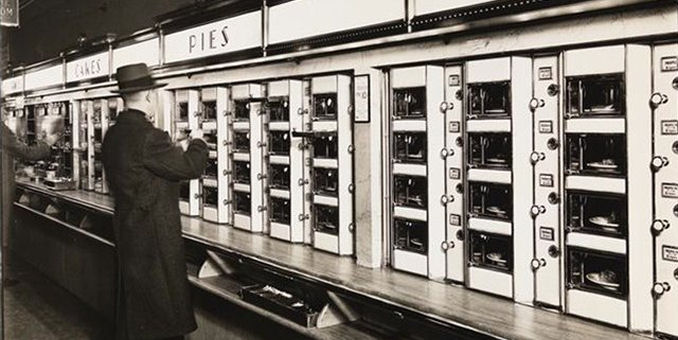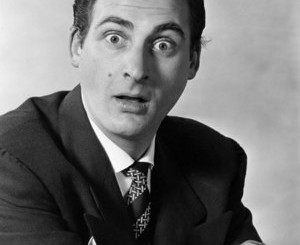In the 1940s and 50s, the Horn & Hardart Automat restaurant – the cafeteria style eatery in which patrons would pump nickles into a slot and have a meal vended to them – where ubiquitous in New York and Philadelphia. And their reputation reached across the country so much so that tourists made it a point to stop at one of the eateries. But these days, the chain is all but forgotten outside of pop culture history buffs. In her debut feature film, director Lisa Hurwitz dives into the history of the Automat to track Horn & Hardart’s rise and eventual fall as one of the most successful restaurant chains of the 20th century.
“I didn’t realize how good it was until there were no more Automats,” reminiscences comedy icon Mel Brook at the beginning of the documentary. “I miss them. I’ve been to Paris. I’ve been to Vienna. I’ve paid $35 for a cup of coffee, not half as good as that nickle Horn & Hardart coffee.”
The nickle cup of coffee was the foundation of the Horn & Hardart empire. When Frank Hardart moved from New Orleans to Philadelphia in 1888, he wanted to bring to the city the experience of French-pressed coffee, then only a regional delicacy in Louisiana. He met Joseph Horn, who was interested in getting into the restaurant business, though a newspaper ad and soon the pair had opened up their the first luncheonette. But it wasn’t until the pair discovered German establishments that were using vending machines to serve their patrons a la carte style that things began to take off for them. They opened their first Automat in Philadelphia in 1902 and opened their first two locations in New York a decade later. And from there it is a tale of growth in those two towns for the next four decades or so.
And while the brass rimmed, glass doors of the Automat would dispense everything from Salisbury steak to macaroni and cheese to baked beans to creamed spinach to variety of cakes, pies and other deserts, it was the coffee that was dispensed from silver dolphin-like spigots that was one of the main attractions. So much so that when they were finally forced by economics in 1950 to raise the price on a cup of joe from a nickle to a dime – the coin slots weren’t designed to accept pennies – Horn & Hardart saw a substantial drop in how much of the beverage they served.
Hurwitz’s film is a fascinating piece of Americana archaeology. Not content to just lay out a dry history of the restaurant chain, Hurwitz digs into why the Automat became such an iconic part of the landscape of the two cities. Essentially, Horn & Hardart are a text book example of being in the right place at the right time. Both cities still served as home for families. (The flight to the suburbs would start towards the end of the 1950s and would ultimately contribute to the company’s ultimate decline.) Single women were entering the workforce in record numbers and needed a place to go for lunch that was affordable. Th company’s own credo to serve well-prepared meals and not exclude anyone from the premises also contributed greatly to repeat business. At their peak in the 1940s and 50s, Horn & Hardart were serving some 800,000 people a day.
The egalitarian nature of Horn & Hardart’s mission had an impact on each city. It helped immigrants assimilate and feel comfortable in their new surroundings. The restaurant’s universal accessibility in terms of race made an impact as well, Interviewee Colin Powell talks about how he never had to give a thought to his skin color being a factor to going into a Horn & Hardart.
But for all the work Hurwitz has done here, there still feels like a few omissions. Even though there was mention of Horn & Hardart held patents on some of its vending technology, did they have any direct competitors during their heyday? (Brief mention is made of Chock Full O’ Nuts attempt to move in on their coffee business during the Automat’s waning days in the 1960s.) Although the documentary does point out that the management was pretty good to the employees, it does glide by two labor disputes (1937 and again in 1952) that the restaurant was faced with. Interview subject and Starbucks president Howard Schultz own reminisces about Horn & Hardart feel more like him contributing to the ongoing mythologizing of his own company as much as he is talking about his own memories of the Automat and how it influenced him.
The Automat‘s last period photograph is of a Horn & Hardart location next to a movie theater. On the marquee? It’s A Wonderful Life. Not a bad epitaph for Horn & Hardart.





